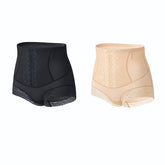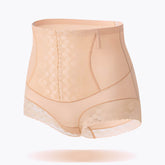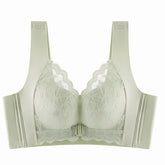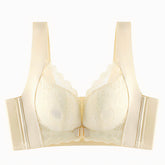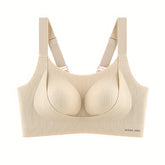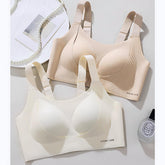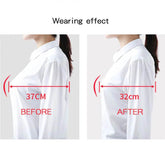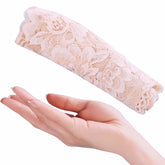How to Measure Your Hips: A Comprehensive Guide

Introduction
When it comes to understanding your body measurements, knowing how to measure your hips is a crucial skill. Whether you're shopping for the perfect pair of jeans, tracking your fitness progress, or simply aiming for a better fit in your everyday clothing, accurate hip measurements can make all the difference. In this guide, we'll walk you through the process of measuring your hips correctly, providing you with the knowledge and tools you need to achieve precise results every time.
Why Measure Your Hips?
Hip measurements are more than just a number—they play a vital role in both fashion and health. Here are two key reasons why you should pay attention to this essential measurement:
For Clothing and Fashion
Finding the right fit in clothing can be a game-changer. Accurate hip measurements ensure that your clothes sit comfortably without tugging, slipping, or feeling too tight. This is especially important for items like underwear, pants, and skirts, where a perfect fit can enhance both comfort and style. By knowing your hip size, you can save time and money by making informed purchasing decisions and reducing the need for returns.
For Health and Fitness
Tracking your hip measurements is also a valuable tool for monitoring weight loss and body changes. As you work towards a healthier lifestyle, your hips may become leaner, even if the scale doesn't show immediate results. Additionally, understanding your hip measurements can help you calculate important health indicators, such as your waist-to-hip ratio, which is linked to overall health risks.
Tools You Will Need
To measure your hips accurately, you'll need a few simple tools:
Flexible Measuring Tape
A soft, flexible measuring tape is essential for this task. Unlike rigid metal tapes, a flexible tape conforms to your body's curves, providing a more accurate measurement. You can find these at sewing or craft stores, or even online.
Mirror
A full-length mirror is a handy tool for ensuring the tape measure is placed correctly. It allows you to check that the tape is parallel to the floor and not twisted, which can affect the accuracy of your measurement.
Optional: Assistant
Having someone help you with the measurement process can make it easier and more precise. If possible, enlist a friend or family member to assist you.
Step-by-Step Guide to Measuring Your Hips

Follow these steps to measure your hips accurately:
Step 1: Preparation
- Remove Outer Garments: For the most accurate measurement, strip down to your underwear or fitted clothing. Bulky items like jeans or thick sweaters can add extra inches and skew your results.
- Stand in Front of a Mirror: Position yourself in front of a full-length mirror so you can easily check the placement of the measuring tape.
- Feet Placement: Stand with your feet together or at hip-width apart. Avoid standing with your feet too wide, as this can affect the measurement.
Step 2: Locating the Widest Part of Your Hips
- Identify the Hip Area: Your hips are located in the area below your natural waistline and include the widest part of your lower body, extending to your buttocks. This is typically about seven to eight inches below your waist.
- Check for the Widest Point: Look in the mirror to identify the widest part of your hips. This may vary from person to person, so take a moment to find the spot where your hips are at their fullest.
Step 3: Measuring
- Wrap the Tape Measure: Hold one end of the measuring tape against your hip and wrap it around your body, ensuring it is parallel to the floor. The tape should go around the widest part of your hips and buttocks.
- Check for Twists and Evenness: Use the mirror to ensure the tape is not twisted and sits evenly around your hips. Adjust as needed to avoid any sagging or bunching.
- Read and Record the Measurement: Once the tape is in place, read the measurement where the end of the tape meets the rest of the tape. Write down this number for future reference.
Common Mistakes to Avoid
To ensure your hip measurements are accurate, avoid these common pitfalls:
- Using the Wrong Tape Measure: Rigid metal tapes are not suitable for measuring hips, as they don't conform to your body's curves. Always use a soft, flexible measuring tape.
- Incorrect Placement: Placing the tape too high or too low can result in inaccurate measurements. Make sure it's around the widest part of your hips and buttocks.
- Tape Too Tight or Too Loose: The tape should be snug but not tight enough to compress your skin. If it's too loose, it can add extra inches to your measurement.
- Not Keeping the Tape Level: An uneven tape can skew your results. Use a mirror to ensure the tape is parallel to the floor.
- Measuring Over Thick Clothing: Thick clothing can add bulk and lead to inaccurate measurements. Measure over underwear or fitted clothing for the best results.
Additional Tips for Accuracy
- Measuring Multiple Times: To ensure consistency, take your hip measurement at least twice. If the numbers differ, take a third measurement and use the average.
- Recording Your Measurements: Write down your hip size so you can refer to it later. This is especially useful if you're tracking progress over time.
- Combining with Other Measurements: For a comprehensive understanding of your body shape, consider measuring your waist and thighs as well. These measurements can provide valuable insights into your overall progress.
Conclusion
Accurate hip measurements are essential for both fashion and health. By following the steps outlined in this guide, you can measure your hips with confidence and precision. Whether you're shopping for the perfect fit or tracking your fitness journey, knowing your hip size is a valuable tool. Remember to measure regularly and consistently to stay on top of your progress.


